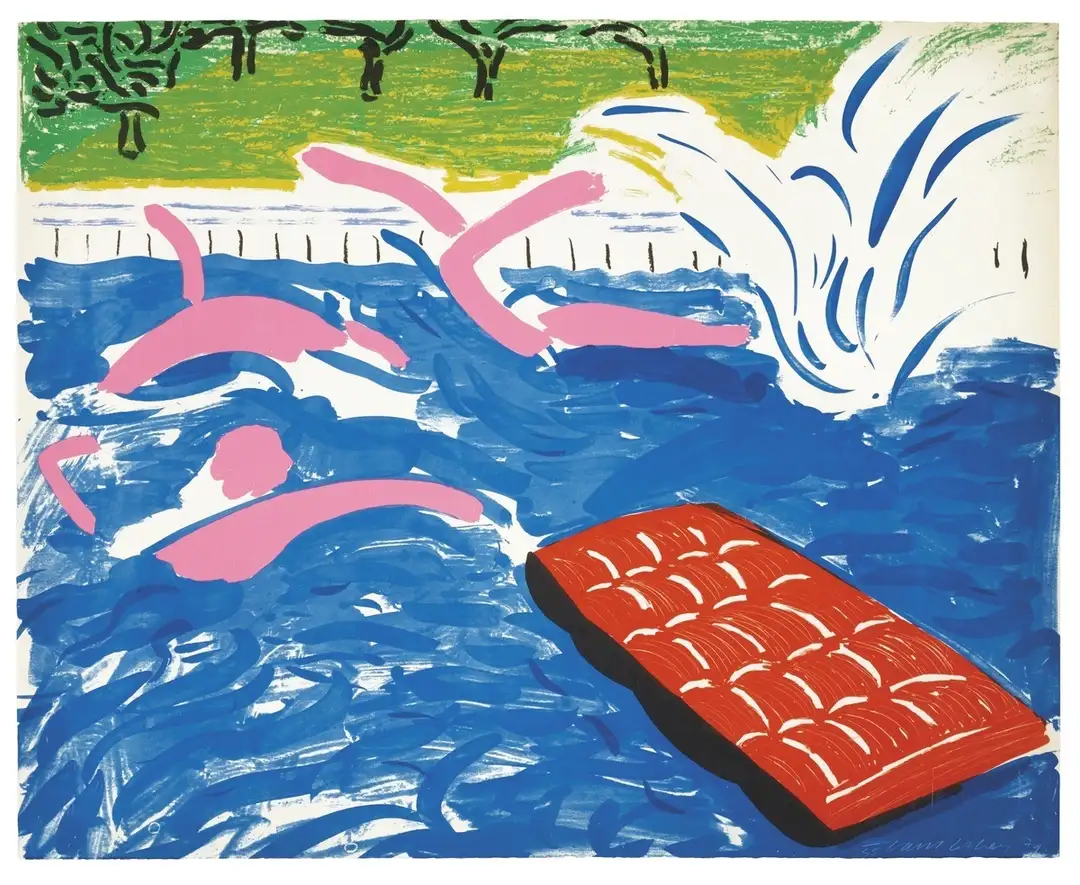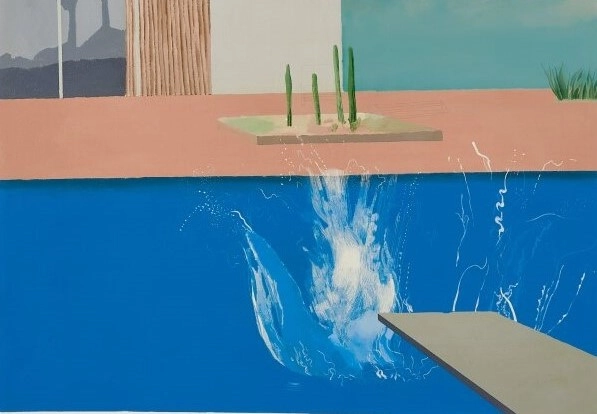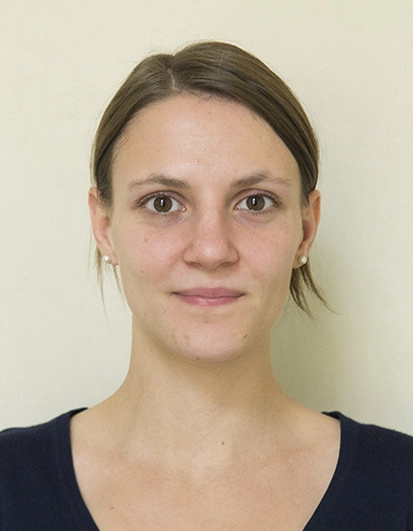Welcome to California. A state with brighter colors, the climate sunnier and life more relaxed. At least according to David Hockney, he created some of his most famous pool paintings at the time. His fascination with the changing surface of the water became his central artistic motif and gave rise to countless works featuring a dominant body of water, supplemented here and there by modernist architecture, mountainous scenery, or naked bathing friends.

David Hockney started painting swimming pools in the mid-1960s. The first painting with this subject is considered to be California Art Collector from 1964. California was a major influence on the artist's interest in this motif. After visiting Los Angeles, he discovered that everyone had a swimming pool.
„When I came to LA and saw pools everywhere, I realised that in England they would be considered a luxury but here they were completely normal,” he said.
The British painter was so captivated by America that he decided to move here. He first worked in California between 1964 and 1968, then returned to London. In 1978 he moved permanently to Los Angeles.

In his American workplace, the "stylistically clean" pool paintings gradually began to appear. From the mid-1960s onwards, David Hockney used acrylic paints, which he found more suitable for his sunny compositions than slow-drying oils, and later moved from sketches, which served as a model for, for example, the 1964 painting Hollywood Pool, to the use of photography.
.jpg)

Water, as an artistic subject, generally attracted David Hockney. Before swimming pools, he depicted reflections in puddles or water dripping from taps. He was interested in its flexibility and its ability to take on virtually any form, as he puts it: „(…) it can be any colour, it’s moveable, it has no set visual description.“
According to Hockney, the water in a swimming pool, unlike, for example, the sea or a lake, reflects light and its surface is constantly changing: „Water in swimming pools changes its looks more than in any other form. The colour of a river is related to the sky it reflects, and the sea always seems to me to be the same colour and have the same dancing patterns. But the look of swimming/pool water is controllable - even its colour can be man/made - and its dancing rhythms reflect not only the sky but, because of its transparency, the depth of the water as well.“
David Hockney's paintings are personal. The swimmers are often his lovers or friends, swimming, getting out of the pool, sunbathing or showering. There, too, lies the ease the artist has found in California. Being gay seemed much more natural here. In his pool scenes, the artist tries to portray gay life as it is, with all its extravagances and differences. He uninhibitedly depicts male nudes, sexual freedom and love of life. Being gay, according to David Hockney, is not about trying to blend in, but about living a life for which there is no need to apologise. David Hockney’s perspective is that of a sun-drenched Californian swimming pool.

David Hockney is one of the most famous British artists and one of the most important representatives of English pop art. The pool canvases made him into a celebrity, as The Guardian recalls years later, stating that "David Hockney's “splash” paintings are still making waves", in reference to one of his most famous works called The Splash. The main motif of the painting is the splashing water in the moment the swimmer jumps and sinks under the surface. The key is precisely the fact that the figure who jumped into the water a moment ago is no longer visible.
In 2018, his Portrait of the Artist / Pool with Two Figures (1972) became the most expensive work by a living artist, auctioned for CZK 2.1 billion. Set amidst a mountainous wooded landscape, the pool is depicted with clear water reflecting the sun's rays. At the edge of the pool stands a man in a red jacket - the artist himself - watching a submerged swimmer, presumably Hockney's student and friend Peter Schlesinger, whom the artist had just broken up with at the time. The image was preceded by a series of photographs taken by David Hockney with his assistant at a villa in Saint-Tropez, southern France. He then painted the painting in his studio for two weeks straight, reportedly for up to 18 hours each day.
In the summer of 1978, David Hockney suffered a creative crisis. He had just finished working in the theatre on Mozart's opera The Magic Flute and all he wanted was to be alone.
„I wanted to go back to painting, and I thought I would not stay in England, I couldn't do it in England; I decided to go to California where they leave you alone and I could paint all alone.“

On his way to Los Angeles, however, he stopped in New York to stay with his friend Kenneth Tyler who showed him some of the works he had created from paper pulp. David Hockney was so intrigued by this technique that he decided to stay with his friend for a few weeks. „Ken had a swimming pool in the garden and every lunch-time I would have a swim. I kept looking at the swimming pool; and it's a wonderful subject, water, the light on the water. And this process with paper pulp demanded a lot of water; you have to wear boots and rubber aprons. I thought, really I should do, find a watery subject for this process and here it is; here, this pool, every time that you look at the surface, you look through it, you look under it (…).“

Hockney called his series of paintings made from coloured pressed paper pulp, which had been experimented with earlier by American abstract painters Ellsworth Kelley, Kenneth Noland and Frank Stella, Paper Pools. It came about quite spontaneously and gave Hockney's work new impulses. Working in a medium he had never used before or since, he returned to solving the same problems he had in the past - capturing the light and its transformations on the surface of the pool. He worked intensively on Paper Pools for six weeks from August to October 1978, and although this series was made in such a short period of time, it represents an important episode in Hockney's body of work that made his subsequent work more relaxed.

„If the water surface is almost still and there is strong sun, then dancing lines with the colours of the spectrum appear everywhere. If the pool hasn’t been used for a few minutes and there’s no breeze, the look is of a single gradation of colour that follows the incline of the floor of the pool. Added to all this is the infinite variety of patterns of material that the pool can be made from.“





